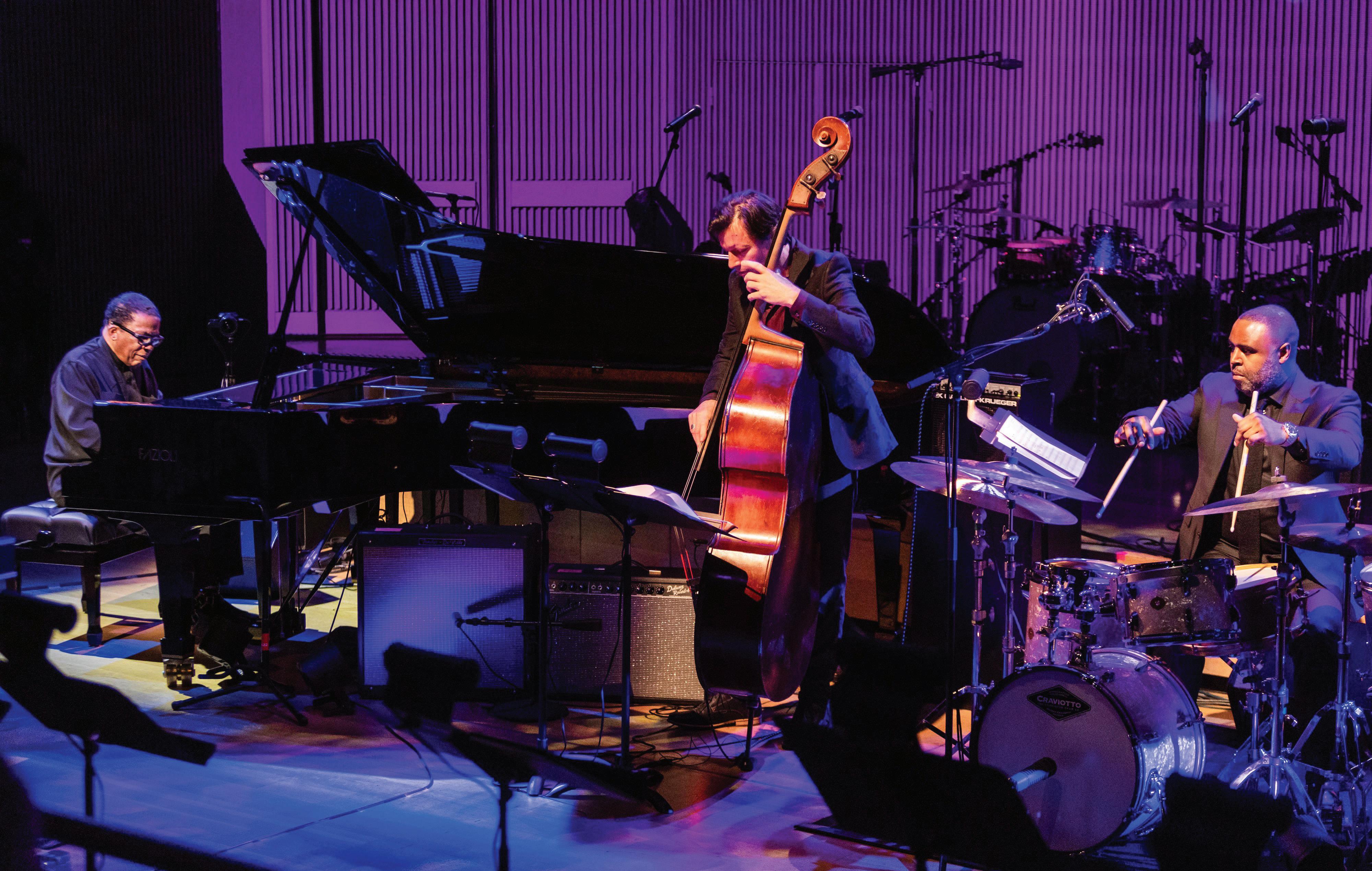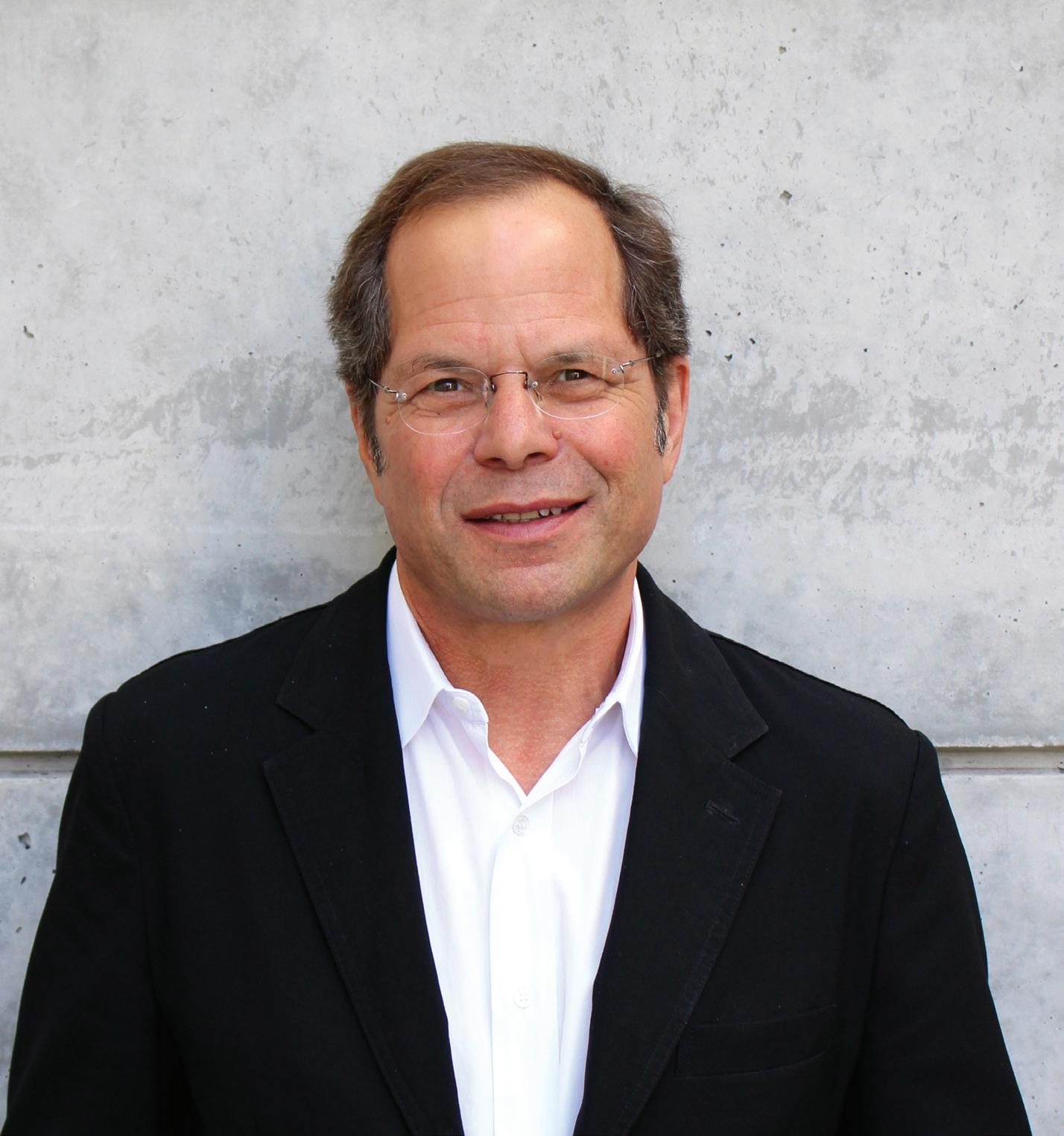
5 minute read
Leaders & Legends
BY LAURIE JO MILLER FARR
Sfjazz Founder And Executive Artistic Director
Randall Kline is responsible for creating one of San Francisco’s most prized cultural institutions, attracting talent, and producing hundreds of shows every year.
At the nonprofit’s annual gala in May 2023, Kline received the Lifetime Achievement Award at SFJAZZ Center for his dedication and outstanding contributions to this art form in San Francisco. He will retire on the organization’s 40th anniversary in November 2023.
Haute Living, San Francisco talked to Randall Kline about how a transplanted college dropout from the Boston area landed in San Francisco and became the visionary behind an internationally admired jazz institution and performance center.
HL: Let’s start at the beginning. What initially attracted you to create Jazz in the City back in 1983?
RK: Growing up in a musical household with jazz, show tunes, opera, piano classics, and the British invasion of the 1960s, there was always something playing. I picked up the electric bass at age 13, made it into garage bands, and eventually played backup in Boston coffee houses during college before dropping out at the Berklee School of Music. It’s a long story involving hitchhiking up from my brother’s in San Diego on a Thanksgiving weekend in 1974, falling in love with San Francisco, and moving with $600 and no idea about what to do.
After two weeks as a bicycle messenger, I worked up the nerve to knock on the door of The Boarding House music and comedy nightclub on Bush Street. My first job there was as a guard at the exit door for The Manhattan Transfer. Unbeknown to me at the time, it was a first big step into a full-time job in a dream world where I got to observe the business inside and out. I saw how hard Steve Martin worked when he recorded his first album here. There were greats like Bob Marley and the Wailers, Willie Nelson, Crystal Gayle, Emmylou Harris, Hall & Oates, Herbie Hancock, Patsy Cline, Stan Getz, and Frank Zappa.
I transferred to SF State for its great music composition department and got a job at Keystone Korner in North Beach, one of the greatest jazz clubs in America, which attracted the likes of Miles Davis, Dizzy Gillespie, and Abbey Lincoln. Meantime, I was stacking produce at Living Foods in Mill Valley, commuting to school, and working at the club. By 1981, I started thinking maybe I should produce jazz concerts myself. Identifying a gap, I zeroed in on San Jose, but those concerts weren’t financially successful, despite a bold lineup.
HL: What happened next?
RK: The Boarding House had a new location, and when the sound and lights guy went on the road with Jimmy Buffett, I felt very fortunate to get a $10 grand-a-year gig as a publicist there. I partnered with the club manager, Clint Gilbert, when the idea for a jazz festival was hatched. He knew about the East Bay Center for the Performing Arts which encouraged us to apply to the city for a grant. We got one for $10,000 from the Hotel Tax Fund/Grant for the Arts program.
Launched as Jazz in the City at the Herbst Theater in 1983, the 2-night event was iffy in year one, a success in year two, and off and running by year three. The jazz festival resonated with San Franciscans and, by the early nineties, renamed as the San Francisco Jazz Festival, it had developed a national reputation.
HL: Eventually, your vision came to life in a 36,000-squarefoot, $64 million building. How did you come up with such an ambitious concept?
RK: Today, we have something that doesn’t exist outside of Jazz at Lincoln Center in New York City: a purposefully built, bricks-andmortar building as a center for jazz. This is a new institution model that responded to the times, and that’s the beauty of the evolution of jazz.
We had the greatest minds contributing to the design and acoustics, working alongside brilliant architects. We looked at other spaces, trying to understand and reinterpret the humanity aspect. On a visit to New York, I recall being struck by Lower Manhattan’s Anspacher Theater with its in-the-round configuration. The space makes audiences feel they’re a part of the act and also allows them to see and appreciate other people’s reactions throughout the room. With superb sound and unobstructed sight lines, both audiences and artists tell me that there’s not one bad seat in the house at SFJAZZ Center, and that’s what we intended.
HL: If these walls could talk, what would they say about the sounds they’ve heard since SFJAZZ opened 10 years ago? And about the audiences?
RK: Live performing arts is not replicable. The experience of being in the room is like nothing else. Built very intentionally to be this communicating place, SFJAZZ Center is all about being a lifeaffirming club connecting people and the artists.
What I do hear a lot—people tend to say this about the space—is that when you walk onto that stage, you can feel everyone who was there before you, everything the walls have absorbed, soaking up all the sounds. More than 10 years ago, metaphysics was something I had in mind when planning the talent for opening night at SFJAZZ Center, determining a line-up that would put their blessing on the place through their presence.
It’s a tradition that we have spontaneous marching down the aisles by the musicians. This lets the music envelop you before you ever know it’s happening. John Santos, the acclaimed local percussionist and one of our first resident artistic directors, describes it as welcoming good spirits, as we’ve been looked over by good spirits these past 10 years. It’s like a temple where music is honored … you can’t fool the gods, and the audience makes all the difference in the world.
HL: Forty years is a tremendous career accomplishment. Where would you like to see the state of jazz in SF 40 years from now?
RK: The future is really about this wonderful experience of being in a gathering place. It’s about finding ways to connect with current culture. So many people are focused on their mobile devices right now, it seems like we’re not even having a full experience as we walk down the street. I hope we don’t go down that hole too deeply into the metaverse.
HL: What does accepting the Lifetime Achievement Award mean to you?
RK: It’s difficult to explain how humbled I am. It’s as high an honor as imaginable. Last year, the Lifetime Achievement Award went to Wynton Marsalis. So, when the tables are turned and I’m on the receiving end, it’s hard to get perspective and to think even remotely of being placed on this list when some of the greatest people in jazz have been previous winners. I am deeply grateful and overwhelmed.
On June 15, 2023, the City of San Francisco unveiled the commemorative street name “Randall Kline Alley” on the 200 Block of Linden Street between Franklin and Gough streets in recognition of Randall Kline’s retirement from SFJAZZ and in celebration of founding the organization 40 years ago, while also recognizing the construction and opening of the SFJAZZ Center 10 years ago.











